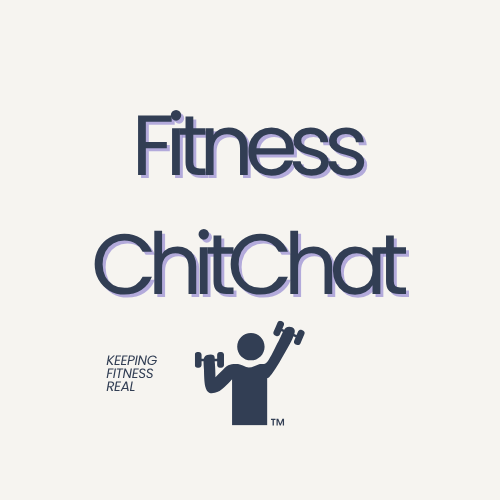Your Fitness Transformation: 3 Nutrition Tips
What’s good! Just wanted to share 3 quick nutrition tips to support you on your fitness transformation journey—something to keep in mind as you continue putting in the work and making progress.
Nutrition can feel overwhelming with all the conflicting advice out there, but it doesn’t have to be complicated. These tips aren’t about perfection—they’re about creating small, sustainable shifts to help support your goals and fit your lifestyle. Whether you’re just getting started or looking to dial things in, these are simple, real-life strategies that have helped me and hopefully can help you too.
Let’s hop into it!
Tip #1: Eat “Clean” Most of the Time
In my opinion, “clean eating” isn’t a strict diet. It’s more of a lifestyle that focuses on the quality of what you eat, not obsessing over how much or when you eat it.
So what exactly does “clean eating” mean? It’s all about:
Prioritizing whole foods and minimally processed options that are closer to their natural state
Choosing packaged items with shorter ingredient lists and limiting artificial ingredients, sugars, and preservatives
Whole Food Examples:
Fruits: Strawberries, blueberries, oranges, apples, bananas, peaches
Vegetables: Spinach, broccoli, cauliflower, kale, peppers
Whole Grains: Brown rice, quinoa, oats, barley
Legumes: Beans, lentils, peas
Nuts and Seeds: Almonds, cashews, walnuts, sunflower seeds, chia seeds
Proteins:
Animal-based: Eggs, chicken, fish
Plant-based: Edamame, beans, lentils, quinoa, nuts and seeds
Minimally Processed Examples:
Fruits & Vegetables: Fresh or frozen, low-sodium or no salt added
Nuts & Seeds: Unsalted, low-sodium or unsweetened
Proteins: Fresh or frozen meats, canned tuna or chicken in water
What to avoid?
There’s a lot of noise out there about what “clean eating” should look like. Don’t go cutting out entire food groups unless you have allergies (then do what you gotta do)—just keep it simple. Read your food labels, and when possible, aim for items with 3–5 ingredients.
Try to limit ultra-processed foods high in salt, unhealthy fats, and sugar, like:
Sugary drinks: Soda, sweetened coffees / teas, fruit juices, energy drinks…and yes, 8 rum & cokes count too
Processed meats: Bacon, hot dogs, some deli meats
Packaged snacks: Chips, cookies, candy, sweetened yogurt
Aside from potential weight loss and weight management benefits, “eating clean” can offer many other health benefits such as:
Improving heart and brain health
Building a stronger immune system
Increasing energy levels
Tip #2: Don’t Make Healthy Boring
Eating healthy doesn't have to mean being boring and eating tasteless meals. Let’s be honest—nobody wants to eat dry chicken breast, boiled potatoes and lightly salted veggies for every meal. Eating healthy shouldn’t feel like punishment. The key to staying consistent? Keep it fun and flavorful!
If you love broccoli but despise kale, then stick with the broccoli! Don’t get swindled into thinking kale or some other vegetable you don’t really like is something you HAVE to consume just because you saw someone who looks healthy eating it. Find the healthy options you actually enjoy and roll with them.
Here are a few ways to spice things up:
1) Breakfast
Simple Start: Egg white omelet with peppers & mushrooms + oatmeal (cooked in water…yeah, you know what I’m talking about)
Spiced-Up Version: A couple whole eggs over sautéed spinach, 1–2 slices of whole wheat toast (optional: top that toast with some Irish butter for that extra flavor), plus a side of fruit
2) Lunch
Simple Start: Canned tuna or chicken over a spring mix salad
Spiced-Up Version: Grilled chicken pita wrap with hummus, veggies, rice and pickles, plus a side salad
3) Dinner
Simple Start: Turkey breast, zucchini, and sweet potatoes
Spiced-Up Version: Chickpea pasta with ground turkey, sun-dried tomatoes, kale, and basil pesto
Moral of the story? Healthy meals can slap if you put a little love and creativity into them.
Tip #3: Reward Yourself
Last (and most important): Reward yourself!
This tip’s key for long-term success. Giving yourself a break—mentally and physically—makes healthy eating more sustainable. Sure, eating “clean” makes me feel energized, but you best believe, ya girl is gonna enjoy her favorite not-so-healthy foods and sip on a drink or two when the weekend hits.
As I’ve mentioned before, I like to stay dialed in during the week and ease up on the weekends. I knock out cravings, enjoy myself, and reset come Monday. It’s a system that works for me—and it might work for you too.
Let’s Round Out this Bad Girl…
1) Focus on Food Quality, Not Restriction
Clean eating isn’t about rigid rules—it’s about choosing whole and minimally processed foods, reading labels, and aiming for simple, nourishing ingredients that fuel your body and boost your energy.
2) Make Healthy Eating Enjoyable
Eating well doesn’t have to be bland or boring. Use creativity to keep your meals flavorful and exciting by incorporating ingredients and dishes you actually enjoy. It’s easier to stay consistent when you like what’s on your plate.
3) Allow Flexibility & Celebrate Balance
Reward yourself and build in flexibility to avoid burnout. Whether it’s enjoying a weekend treat or your favorite meal, giving yourself mental and physical breaks makes healthy habits sustainable long-term.
Go Crush Your Nutrition!
Hope you found something in these tips helpful for your journey!
At the end of the day, your journey doesn’t have to be overwhelming or restrictive—it just needs to be realistic and sustainable. Prioritize quality foods, make your meals enjoyable, and leave space for balance along the way. With a little planning and consistency, you can build habits that fuel your goals and your lifestyle. You got this!
Keep Focused. Keep Motivated. Keep Crushing It!





